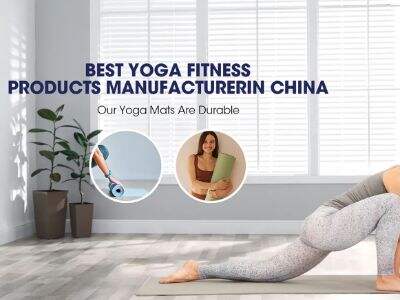Yoga mats are great for helping you stay active and maintain a healthy lifestyle. Not only do they create a convenient place to practice yoga, but they can help improve at-home exercises. With the wide variety of different types of mats FDM offers, finding one that suits you best can feel a bit daunting. Don't worry! But I hope you have an easy time thinking of these simple things while selecting your best yoga mat.

Choosing the Right Material
MaterialOne of the major deciding factor is what type material your Acupressure Mat For Feet is made out of. Yoga mats are made from several types of materials, but the most common ones among them include rubber, PVC and TPE. For those who are environmentally-conscious, rubber mats rank highly on the list of Earth friendly materials as they promote re-use and help to prevent rapid mat turnover. PVC mats are typically less expensive, very easy to clean -a big plus if you practice yoga a lot. TPE Tapis are a newer selection in the market; and they made from eco-safe biodegradable materials with out chemicals which have wonderful non-slip issues. Mat Feel When it comes to choosing a mat, the most important part is that you like your own mat. This is why it might be worth experimenting with a few different options to see what you prefer.
Eco-Friendly Options
Eco-Friendly If you are passionate about the environment, or simply would like to decide on an earth-friendly type of yoga mat then there's a very good possibility that will be Bamboo Yoga Mats or Acupressure Mat. These can be crafted from biodegradable materials like natural rubber, cork and jute sourced sustainably so they break down much faster when no longer in use. Additionally, given that they are manufacturers some of them produce their yoga mats as second life products made from recycled resources like old car tires. Even that eco-friendly mats may be a little pricier than traditional ones, the convenience of knowing your option is one to help out dear Mother Nature adds up much more.
Thickness and Durability
Next, you must consider how much padding your yoga mat should have. If your mat is too thin, it can be painful to do some of the poses and possibly damage your joints because there may not be enough cushioning. Mats that are too thick can be poor for keeping balance during some poses, however. A 4–6mm thick mat is generally good for most people as it can provide a decent amount of cushion and support. Thickness is one thing, but you will also want a mat that holds up quite well to regular use. Cost — Mats made from higher quality materials (such as all- natural rubber) will usually last longer and be of better value than cheaper competitors.
Non-Slip Surfaces
Non-slip surface is necessary for safety reasons while doing yoga. Slippery mats can be extremely risky and this may prevent you from maintaining your poses properly. Stay away from accidents by selecting a mat that builds on higher traction or has special grip technology to help you stay rooted in your place. Rubber or cork mats give you the best grip when sweating during practice, while PVC ones may need some additional assistance like a yoga towel to prevent slipping vendors sell.
Accessory Considerations
Last but not least, do think about the acessories you may require with your Acupuncture Matts. Mat Bags or Straps (if you plan to lug your mat on the go back and forth from practice) A mat may have a carry strap included, or you might need to purchase one separately. You might also need a yoga towel to put over your mat if you are the person who sweats easily while doing practice. Using a towel is good way to keep from slipping and for keeping your mat nice, clean and fresh after each use.






